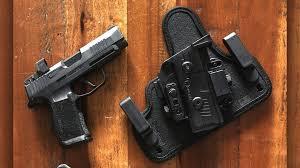
Circumcision is a medical procedure that removes the foreskin from the head of the penis. This can help protect against balanitis, phimosis, paraphimosis and other health complications.
Once numb, your doctor can administer either a shot of medicine or apply a numbing cream to the area before placing a clamp or ring on your baby’s penis.
Procedures
Circumcision is a surgical procedure that removes the skin at the tip of your penis. It’s typically performed on healthy babies, but can also be performed on older boys or men for medical reasons or to reduce their risk of certain sexually transmitted infections.
Newborns and older boys may require a local anesthetic to numb the area where they will be circumcised. Depending on their age, they may also receive medicine to put them to sleep while the procedure is being done.
After the procedure, your doctor will clean and apply topical antibiotic ointment or petroleum jelly to the area. They then wrap it with gauze and zip-close the incision.
Doctors may perform frenuloplasty if they detect an issue with your frenulum (tissue between your head of penis and underside). This could cause pain or discomfort while trying to achieve an erection.
Preparation
If you are the parent of a baby who will be circumcised, it is important to prepare them for surgery. This includes washing and sterilizing the penis before going to hospital, as well as abstaining from food or drinks for at least 6 hours prior (if having a general anaesthetic).
Your son should learn how to properly wash his penis each day with the foreskin, in order to avoid developing smegma (an infection).
Circumcision can reduce your child’s exposure to certain sexually transmitted infections (STIs), including HIV; however, it is more important to ensure good hygiene and reduce these risks than simply circumcision alone.
Incisions
Circumcision is usually performed on healthy boys who are at least one year old and has proven to be a safe operation with few potential side effects.
The doctor will use an anesthetic (a pain reliever) to numb the area where your incision will be made. This can be accomplished by applying numbing cream onto your baby’s penis or injecting small amounts of anesthetic around it.
Sometimes, a layer of ointment can be applied on the incision line to reduce any pain your child may feel. This helps keep the area clean and dry so that it heals quickly.
Adhesions, which are areas of the foreskin stuck to the glans, can be lysed prior to circumcision in order to make the procedure simpler. Without them, one section of the circumcision doctor melbourne edge may draw up over another section of skin for an asymmetric appearance.
Circumcision can have the rare consequence of creating a fistula, or opening, between the urethra and glans. This may occur if an instrument used to make the dorsal slit in the foreskin is accidentally inserted into the urethra.
Closure
Circumcision is an operation that removes the foreskin (extra skin) from the head of the penis. It may be performed to reduce the risk of sexually transmitted diseases and cancer.
Typically, this procedure is done in a hospital under anesthesia. After surgery, the area will be covered with a sterile dressing for healing; typically taking only a few days.
Absorbable sutures are usually employed to close circumcision wounds, but cyanoacrylate tissue glue has been developed as an alternative solution. When exposed to basic substances like blood or water, this material polymerizes and becomes solid again – leading to decreased operative time, complications rate and postoperative pain.
Procedures
Circumcision is a surgical procedure that removes the skin at the tip of your penis. It’s typically performed on healthy babies, but can also be performed on older boys or men for medical reasons or to reduce their risk of certain sexually transmitted infections.
Newborns and older boys may require a local anesthetic to numb the area where they will be circumcised. Depending on their age, they may also receive medicine to put them to sleep while the procedure is being done.
After the procedure, your doctor will clean and apply topical antibiotic ointment or petroleum jelly to the area. They then wrap it with gauze and zip-close the incision.
Doctors may perform frenuloplasty if they detect an issue with your frenulum (tissue between your head of penis and underside). This could cause pain or discomfort while trying to achieve an erection.
Preparation
If you are the parent of a baby who will be circumcised, it is important to prepare them for surgery. This includes washing and sterilizing the penis before going to hospital, as well as abstaining from food or drinks for at least 6 hours prior (if having a general anaesthetic).
Your son should learn how to properly wash his penis each day with the foreskin, in order to avoid developing smegma (an infection).
Circumcision can reduce your child’s exposure to certain sexually transmitted infections (STIs), including HIV; however, it is more important to ensure good hygiene and reduce these risks than simply circumcision alone.
Incisions
Circumcision is usually performed on healthy boys who are at least one year old and has proven to be a safe operation with few potential side effects.
The doctor will use an anesthetic (a pain reliever) to numb the area where your incision will be made. This can be accomplished by applying numbing cream onto your baby’s penis or injecting small amounts of anesthetic around it.
Sometimes, a layer of ointment can be applied on the incision line to reduce any pain your child may feel. This helps keep the area clean and dry so that it heals quickly.








